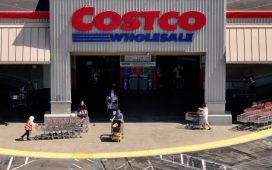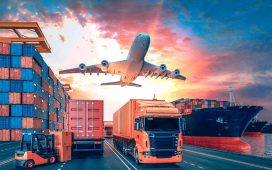North America Technology Correspondent
Business reporter
 Getty Images
Getty ImagesTariffs on goods coming into the US will add nearly a billion dollars to Apple’s costs this quarter, the tech giant has said, despite President Donald Trump’s decision to spare key electronics from the new import taxes.
The estimate from the iPhone maker comes as firms are scrambling to respond to Trump’s tariff strategy, which is disrupting supply chains and raising uncertainty about consumer demand.
Apple said it was shifting production of iPhones bound for the American market away from China, which is facing the highest duties.
The majority of iPhones sold in the US in coming months will be made in India, Apple said.
For now, the turmoil has left Apple’s sales unscathed.
The company said revenues for the first three months of the year rose 5% from the same period last year, to $95.4bn.
Amazon, another tech giant whose results were being closely watched for signs of tariff damage, likewise said sales were holding up, rising 8% year-on-year in its North America e-commerce business in the most recent quarter.
It forecast similar growth in the months ahead.
“Obviously no one of us knows exactly where tariffs will settle or when,” said Amazon boss Andy Jassy, while noting that the firm has emerged from periods of disruption – like the pandemic – stronger than before.
“We’re often able to weather challenging conditions better than others,” he said. “I’m optimistic this could happen again.”
Made in India
Apple shares had plummeted after Trump announced his administration would levy “reciprocal tariffs” on products imported to the United States, with the aim of persuading companies to manufacture more in the US.
Trump has said he hopes Apple products in particular will be made in the country.
But the administration has faced significant pressure to moderate its plans. Shortly after the tariffs went into effect, it announced that certain electronics, including phones and computers, would be exempted.
On a call with investors to discuss the firm’s quarterly performance, Apple boss Tim Cook seemed keen to draw attention to Apple’s investments in the US, opening with a reminder of its plans to invest $500bn across multiple states over the next four years.
But though Apple is already shifting its supply chain for US-bound products away from China, it is India and Vietnam that are poised to be the largest beneficiaries, not the US.
Mr Cook said the company expected to make the majority of iPhones destined for the US in India by the end of June, and move production of almost all iPads, Macs, Apple Watches and Airpods to Vietnam.
“We do expect the majority of iPhones sold in US will have India as their country of origin,” Mr Cook said, referring to the next three months of trading.
He said Vietnam would be the country of origin “for almost all iPad, Mac, Apple Watch and AirPods product sold in the US”.
China will remain the country of origin for the vast majority of total products sold outside the US, he added.
New positioning
Nevertheless, the shift of the iPhone supply chain to India was “impressive” according to Patrick Moorhead, chief executive of Moor Insights & Strategy.
“This is a marked change from what [Cook] said a few years back when he said that only China can build iPhones,” Mr Moorhead said.
“There is lots of progress that Apple must show here but it’s a pretty good start,” he said.
Amazon is also repositioning itself to increase resilience in the face of the tariffs.
The company said it working to make sure it had a diversity of sellers and Mr Jassy said he felt the firm was well-positioned for the months ahead, pointing to the firm’s scale and its role supplying everyday essentials.
For now, it said sales had not been hurt by the tariff turmoil. If anything, executives said the business may have benefited from some customers starting to stockpile.
Overall sales jumped 9% to $155.7bn in the first three months of 2025, compared with the same period last year, while profits surged more than 60% year-on-year to roughly $17bn.









